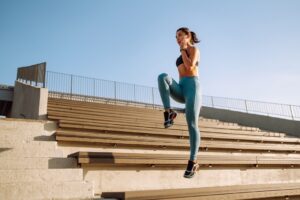 How are you taking care of your bones to ensure they stay strong, dense, and healthy as you age?
How are you taking care of your bones to ensure they stay strong, dense, and healthy as you age?
If you’re getting some sunlight each day to get your vitamin D (or supplementing) and eating a calcium-rich diet, you might think you’ve got all your bases covered. But there is one more essential component of building strong, healthy bones.
Advertisement
Maintaining bone strength/health is very important with age. Doing so can help reduce the risk for age-related bone loss and potentially prevent conditions like osteopenia and osteoporosis. Strong bones can also lower your risk for fractures.
Once you’ve got the nutrients to build bone – vitamin D, calcium, and a few others – you’ll want to exercise. Resistance exercise helps to keep bone strong by putting it under stress. The stress caused by exercise can contribute to bone density and potentially lead to the formation of new bone.
Exercise can also help bone by building muscle to remove pressure from the bone, as well as make your body a little more resilient against potential bumps that could lead to breaks. Lastly, muscle can help improve balance and agility to reduce the risk of a potentially harmful fall.
So what kind of exercise works best for bones? Anything that is load-bearing. That means that walking, running, and weight training can all help build bone.
On the other hand, exercises like swimming or cycling are good for your heart but do virtually nothing to build bone strength.
Advertisement
Resistance training is likely the best way to build strong bones, so trying to perform movements like assisted squats and calf raises can be highly beneficial to bones in the lower body.
You can use the walls in your home or a chair to perform assisted squats. To use the wall, stand with your back flat against it and your feet about a foot in front of you. Keeping your back against the wall, bend your knees, so your back slides down. Ensure knees do not extend beyond your toes, so adjust your feet as needed.
You can also use a sturdy chair with armrests to grip to perform the same movement. Remember to use your legs to lift you out of it instead of pushing up with your arms.
